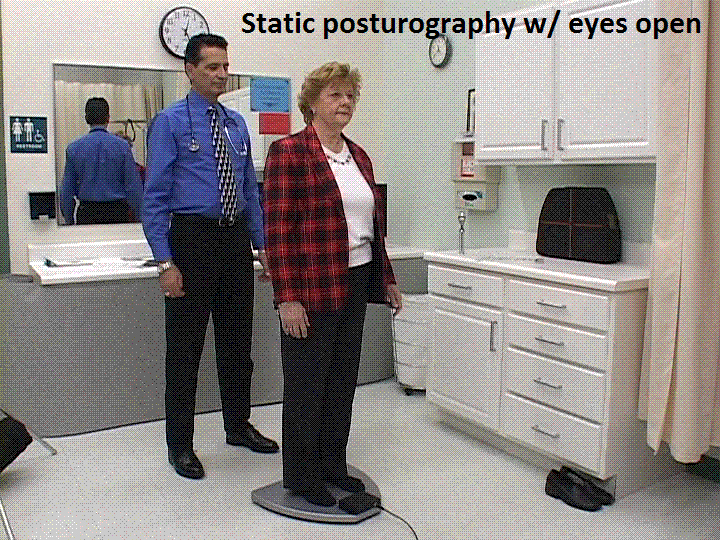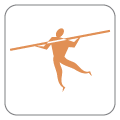Since the CAPS® force platforms were designed to be highly portable (they were the first posturographic devices and some of the first medical devices in general capable of being run from a battery powered portable computer without requiring any external power source; and they were the first and still one of the few balance assessing tools that do not require any special setup such as leveling of the platform on the floor). Any of our CAPS® systems can be used wherever the need for a balance test or screening might arise, including on the sidelines of a sports arena.
The CAPS® force platforms were also designed to be extremely sensitive and accurate, so they can detect even minute changes in balance that might provide an early indication of changes in a person's body before these become evident and difficult to reverse. This is actually a very important point: just because a device seems to be able to measure sway and hence can assess balance, it does not mean it can do so with sufficient accuracy and precision. When standing still on a rigid surface a person's sway can be 2 mm or even less [9]; furthermore, a change in sway of less than 20% has been reported to be significant [10]. This means that the error in measuring the sway has to be less than 0.4 mm. Since sway is an amplitude within two extreme points, the error in measuring the position of the body has to be less than 0.2 mm, which is actually what the International Society for Posture and Gait Research (ISPGR) standards call for [11]. Few devices currently on the market satisfy the ISPGR standard, but the CAPS® force platforms do [12]. What can happen when devices are not accurate and precise enough is that even major changes go undetected, as a paper by Bernstein and Burkard clearly shows [13].
The CAPS® makes it possible to have a very fast and objective testing of balance on the sidelines, requiring less than one minute, and without the intervention of highly trained personnel. However, since it is also documented in the scientific literature that changes in an athlete's balance can occur because of fatigue, overall physical and mental status [14], as well as training [15][16], regular baselines should be obtained for each athlete to identify how much these aspects affect his/her balance. Furthermore, assessing the athlete's balance just before each game and immediately after high impact collisions common to several sports makes it possible to quickly identify otherwise undetected injuries, particularly head injuries that do not produce evident symptoms. Once an athlete has experienced an injury, monitoring the athlete's balance during the recovery provides coaches, athletic trainers and attending clinicians with an objective and quick assessment of the athlete's readiness to return to competition, rather than relying on the commonly used standard of being symptoms free for 24 hours.
[9] Browne J, O'Hare N. "Development of a Quality Control Procedure for Force Platforms." Physiol Meas. 2000; 21(4):515‑24.
[10] Moghadam M, Ashayeri H, Salavati M, Sarafzadeh J, Taghipoor KD, Saeedi A, Salehi R. "Reliability of center of pressure measures of postural stability in healthy older adults: effects of postural task difficulty and cognitive load." Gait Posture. 2011;33(4);651‑5.
[11] Scoppa F, Capra R, Gallamini M, Shiffer R. "Clinical stabilometry standardization: Basic definitions ‑ acquisition interval ‑ sampling frequency." Gait Posture. 2013;37:290‑2.
[12] Pagnacco G, Carrick FR, Wright CHG, Oggero E. "In‑situ verification of accuracy, precision and resolution of force and balance platforms." Biomed Sci Instrum 2014;50.
[13] Bernstein J, Burkard R. "Test Order Effects of Computerized Dynamic Posturography and Calorics", Am J Audiol; 2009 Jun; 18(1):34‑44.
[14] van Donkelaar P, Osternig L, Chou LS. "Attentional and biomechanical deficits interact after mild traumatic brain injury." Exerc Sport Sci Rev. 2006 Apr;34(2):77‑82.
[15] Schneiders AG, Sullivan SJ, McCrory PR, Gray A, Maruthayanar S, Singh P, Ranhotigammage P, Van der Salm R. "The effect of exercise on motor performance tasks used in the neurological assessment of sports‑related concussion." Br J Sports Med. 2008 Dec;42(12):1011‑3. Epub 2008 Feb 28.
[16] Fox ZG, Mihalik JP, Blackburn JT, Battaglini CL, Guskiewicz KM. "Return of postural control to baseline after anaerobic and aerobic exercise protocols." J Athl Train. 2008 Sep‑Oct;43(5):456‑63.





